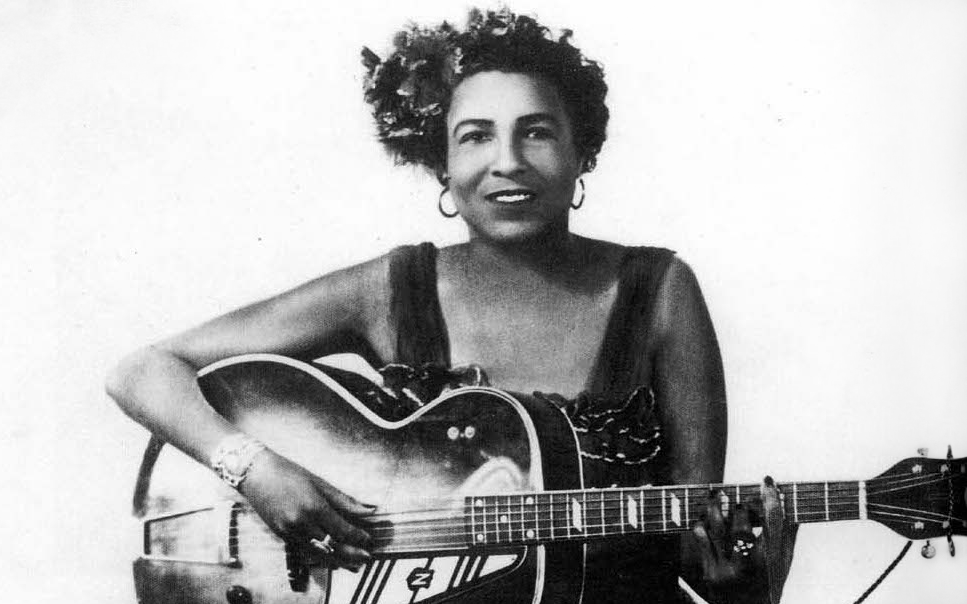Although it seems to start earlier and earlier each year, December signifies the official start of the holiday season. One harbinger of the most wonderful time of the year is the flurry of holiday songs coming through the radio and retail speakers. Most of the holiday songs you hear are covers, with only a few originals able to slip into the canon every decade.
If you think you are up to that challenge and you’re feeling festive with your compositional muse this holiday season, here are some tips courtesy of songwriter Brady Rymer, Berklee Online songwriting instructors Andrea Stolpe and Jimmy Kachulis, as well as Berklee’s Joe Bennett, who helped compose what is winkingly known as “the happiest Christmas song, according to science.”
Getting Inspired
There’s no better time to write a holiday song than when the season is in full swing with plenty of opportunities to get in the spirit. Brady Rymer, a three-time Grammy-nominated children’s musician and member of the band From Good Homes, released an all-original holiday album, Revvin’ Up the Reindeer, in 2017.
“I would get inspired naturally around the holidays,” says Rymer. “This record was a couple years in the making. I’d start writing a few songs in November and December, and then move on, and then come back to it again.”
When approaching a holiday song, Rymer suggests drawing upon personal experiences and traditions. Songs about untangling Christmas lights, making warm latkes with sugar and spice, and even managing holiday-induced stress are all situations that appear on the album.
“Being a songwriter, I draw on my personal traditions and my personal time with my family, and my personal love of the season,” says Rymer. “It was an important thing for me to draw on that and to just trust that.”
Rymer says that inspiration for holiday songs can extend beyond your own traditions so long as you write about them authentically. His holiday album features songs about Christmas, Hanukkah, and New Year’s.
“You have to kind of live it to write about it honestly,” says Rymer. “Spend enough time around other people’s holiday houses and traditions to know that it’s so rich with individuality and difference. You could come back and write about it from a personal perspective.”
Writing the Lyrics
Stolpe and Kachulis agree that writing holiday music requires just as much thought and care as any song you would write.
“Writing a holiday song is an exercise that we wouldn’t normally give ourselves,” says Stolpe, a multiplatinum songwriter and instructor of Berklee Online’s Commercial Songwriting Techniques course. “It stretches us as writers. On the outside, it seems easy to write songs that are so simple and repetitive and clear in their message when in actuality, it’s pretty difficult.”
Establishing a clear and singular focus can be one of the most important steps to writing a hit holiday song. Stolpe points out that one of the downfalls to great songwriting is trying to incorporate too many ideas. Instead, just write one song per message that you want to convey.
“A successful holiday song sets the scene,” she says. “It’s intimate and personal. Also, it doesn’t sound like any other song, even if that sensory message culminates in saying something like, ‘All I want for Christmas is you.’ The concepts stay broad, but it’s how we write the concept that differentiates our song lyrically from every other holiday song.”
To achieve lyrics that are accessible and universal with that singular message, Kachulis—who authored and instructs Berklee Online’s Writing Hit Songs course—recommends starting with an overall theme, then building in specifics with sensory images. For example, a universal theme could be “home is where the heart is” and the specifics are the images of fireplaces, trees, lights, and the personal instances when you feel at home. Kachulis says that most holiday songs fall into a few popular categories.
“Certain holiday themes seem to emerge and they are not just bound by the Christian iconography,” he says. “For instance, songs are often about comforting people in troubling times, about being home. Not just being in a safe place at home, but surrounded by people you love.”
Joe Bennett, a forensic musicologist and professor of professional music and songwriting at Berklee College of Music, has studied these recurring themes in holiday music. In 2017, he conducted a study that inspired a song titled, “Love’s Not Just for Christmas.”
After examining the top 78 holiday songs on Spotify, Bennett found the most common themes included: Home (family, gifts under the tree), Love (finding that special someone at Christmas), Lost love (feeling lonely at Christmas), Parties (dancing, mistletoe), Santa (and his reindeer), Snow (snowmen, sleighs, cold winters), Religion (Nativity story), and Peace on Earth.
Writing the Music
Holiday songs have musical elements that just make them sound festive. Instruments like sleigh bells and choirs singing indicate to listeners that they’re undoubtedly listening to a holiday song before they even hear the lyrics. Bennett’s study confirmed that 95 percent of the holiday songs he studied are in major keys with an average tempo of 115 beats per minute.
“With holiday music, there’s an opportunity to write upbeat, up-tempo, happy songs,” says Stolpe. “I think the very idea of writing a happy song stretches us. So I think within those parameters it implies certain tempos and moods that we might not normally write.”
Stolpe suggests figuring out how to make holiday music fit into your style as an artist and try not to conform to what you think a holiday song should sound like. If you’re an Americana artist, then write an Americana holiday album rather than trying to write a pop album.
“I’m a big proponent of write what you really enjoy listening to, and what you write naturally,” says Stolpe. “Then figure out, ‘Well, where do I fit? How would it be best to market this? Who’s my listening audience?’ I think it’s an opportunity to figure out how does our artistic style, our own brand, sound within a holiday genre or holiday format.”
As you get started, Stolpe and Kachulis encourage you not to start completely from scratch.
“The real secret of songwriting is that we don’t start with a blank page,” says Kachulis. “Anybody who tells you they start with a blank page is not telling you the whole story. We take a song as our model and whether it’s a chord progression or a rhythm or a bass line or a title or a lyrical theme, we start with something and then we write our own version of it.”
Try it Yourself
Five exercises from Jimmy Kachulis to help you get started:
- Pick a popular holiday song and write down a few words that stand out to you. Next, start listing rhymes to the words that you selected. Then, build your own lyrics around these rhymes. For example, take the song “Silver Bells.” You can start by listing rhymes to the word “bell”: spell, dwell, yell, sell, smell. Then rearrange and add on to create a verse or chorus.
- Write down phrases that stand out to you in a holiday song. One phrase from a traditional holiday song could be a focal point in your original song. Take the line, “It’s Christmas time in the city,” from “Silver Bells.” This one phrase could become the chorus to your song.
- Take the chord progression from a traditional holiday song. Change the tempo to give it a new feel or write a new melody.
- Incorporate major 7ths which invoke a “wistful” feeling.
- Borrow the chord progressions from non-holiday songs like John Lennon’s “Imagine,” Jim Croce’s “Photographs and Memories,” or Simon and Garfunkel’s “Old Friends.” All three use major 7ths.
STUDY SONGWRITING WITH BERKLEE ONLINE












